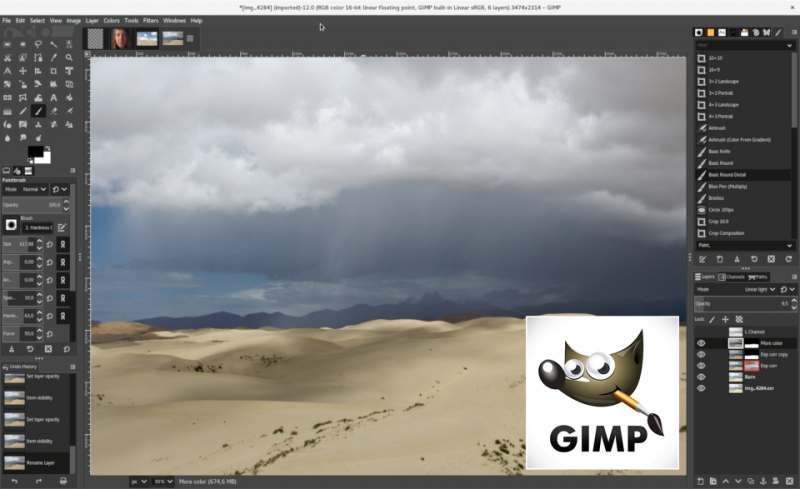Gimp is a multiplatform photo manipulation tool. GIMP is an acronym for GNU Image Manipulation Program. The GIMP is suitable for a variety of image manipulation tasks, including photo retouching, image composition, and image construction. It has many capabilities. It can be used as a simple paint program, an expert quality photo retouching program, an online batch processing system, a mass production image renderer, an image format converter, etc.
Features of Gimp:
- Full suite of painting tools including brushes, a pencil, an airbrush, cloning, etc.
- Tile-based memory management so image size is limited only by available disk space
- Sub-pixel sampling for all paint tools for high-quality anti-aliasing
- Full Alpha channel support
- Layers and channels
- A procedural database for calling internal GIMP functions from external programs, such as Script-Fu
- Advanced scripting capabilities
- Multiple undo/redo (limited only by disk space)
- Transformation tools including rotate, scale, shear and flip
- File formats supported include GIF, JPEG, PNG, XPM, TIFF, TGA, MPEG, PS, PDF, PCX, BMP and many others
- Selection tools including rectangle, ellipse, free, fuzzy, bezier and intelligent
- Plug-ins that allow for the easy addition of new file formats and new effect filters.
System Requirements for GIMP:
- Supported OS: Windows 7/8/10
- Processor: Pentium IV or above
- RAM: 1 GB RAM (2 GB recommended)
- Free Hard Disk Space: 200 MB or more.

 Home Page
Home Page











